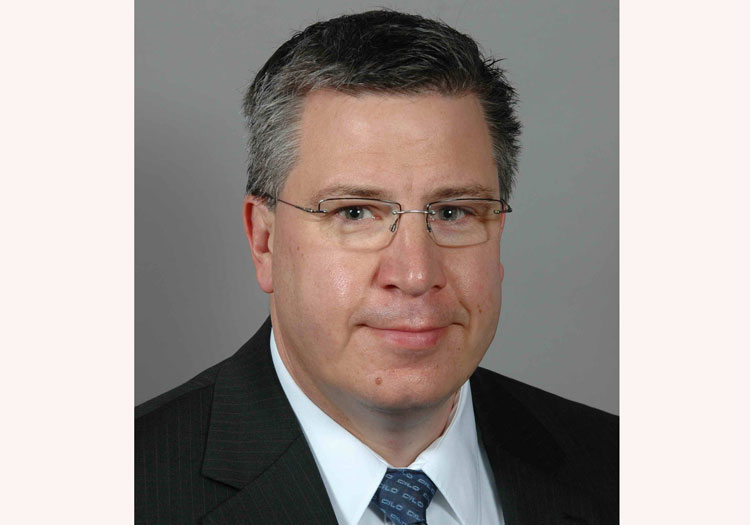Sustainable Nonwovens: How is the market for geotextiles in general at present?
Gunnar Hemmer: For Dilo, the geotextile market is one of the most important sectors we supply our technology to, and based on several forecasts we are expecting growth to continue at above 10% per year for the foreseeable future.
SNW: What are the key benefits of needlepunched nonwoven geotextiles as compared to woven alternatives?
GH: The key benefits are that the technical properties can be optimised for their specific function and needlepunched geotextiles are permeable to water for separation, filtration and dewatering applications. In addition, very high production rates can be acieved.
SNW: What fibres are most commonly used in nonwoven geotextiles?
GH: Polypropylene, HD-polypropylene and polyester.
SNW: What are the typical components of a Dilo line for geotextiles?
GH: Typically they will include opening and blending with the Baltromix, carding willow and fine opener, card feeding with the vibration chute feeder, carding with either our Multicard, SSC or VQC machines, a CV1 area weight control system, a high speed three-belt crosslapper, a lap drafter, three looms with drafting unit behind the first, thermal treatment (if required) and cutting/winding units.
SNW: What working widths do these lines go to?
GH: This generally depends on the countries where the lines are to be installed and varies between six and 8.5 metres.
SNW: How important is energy usage and recovery on such lines?
GH: Energy consumption is always a key consideration. Our lines are energy efficient and the torque motors inside the crosslapper allow energy to be fed back into the system.
SNW: The latest Dilo HyperTex system is for multi-layered materials. Can you provide a few details of how it works?
GH: In a number of application fields, including geotextiles, but also such as filter media, roofing materials and floorcoverings, needled nonwovens with high low-load resistance are required in order to achieve the required stress-strain behaviour. This is generally achieved by using reinforcing meshes, grids or pre-fixed yarn scrims. This sandwich structure, consisting of base web, the reinforcing material and the upper web, results in a nonwovens which show little resilience and elongation. Within the mechanical stress limits, the tearing of the nonwoven by vibration and load is consequently prevented.
The normal technology for the production of three-layer needled nonwovens with reinforcing yarns involves the following separate stages:
- Preneedling and the production of needled felt rolls and separate unwinding stations for base web, reinforcing mesh and upper web on the feeding apron of a double needleloom.
- Preneedling at a working width of twice the desired width, centre slitting and a turning unit and a feeding of the reinforcing mesh between the two needlefelts which have been turned by 90°, put on top of each other and subsequently needled together.
- Two nonwoven production lines, each consisting of cards and crosslappers, followed by unwinding of the reinforcing mesh between the two crosslaid webs and subsequent needling.
The new HyperTex produces multi-layer felts made from base web, the reinforcing material and upper web employing the scrim fabric machine of Ontec Automation GmbH, which brings a scrim of yarn or filaments inline and unconsolidated between two webs. The needlefelts may be preneedled offline and the scrim is fed between the two unwinding stations. Needling together follows in the subsequent needleloom.
A great advantage of this method is the very high production speed for the complete process. Scrim formation and subsequent needling can be carried out at speeds of up to 40 m/min.
SNW: What do these multi-layered materials typically consist of in terms of fibre combinations?
GH: Due to the fact that very high flexibility is one of the key-advantages of the HyperTex technology there is no typical combination of fibres. Any kind of preneedled material can be used in combination with nearly all types of fibre for the layers – synthetics, carbon, glass and even metal fibres.
SNW: What are the advantages of such multi-layered products?
GH: One of the main advantages is their high flexibility, and with this, the ability to very specifically optimise the product to individual requirements, including the area weight, strength, MD/CD ratio, etc.
SNW: Do you notice any emerging trends in the geotextile sector?
GH: There are no special trends arising within the geotextile sector, but the market will grow continuously and the move will continue to be increasingly to higher quality products. Product weight are decreasing while retaining their high strength values and production speeds continue to increase. As a result, older lines are becoming no longer efficient and need to be exchanged.
